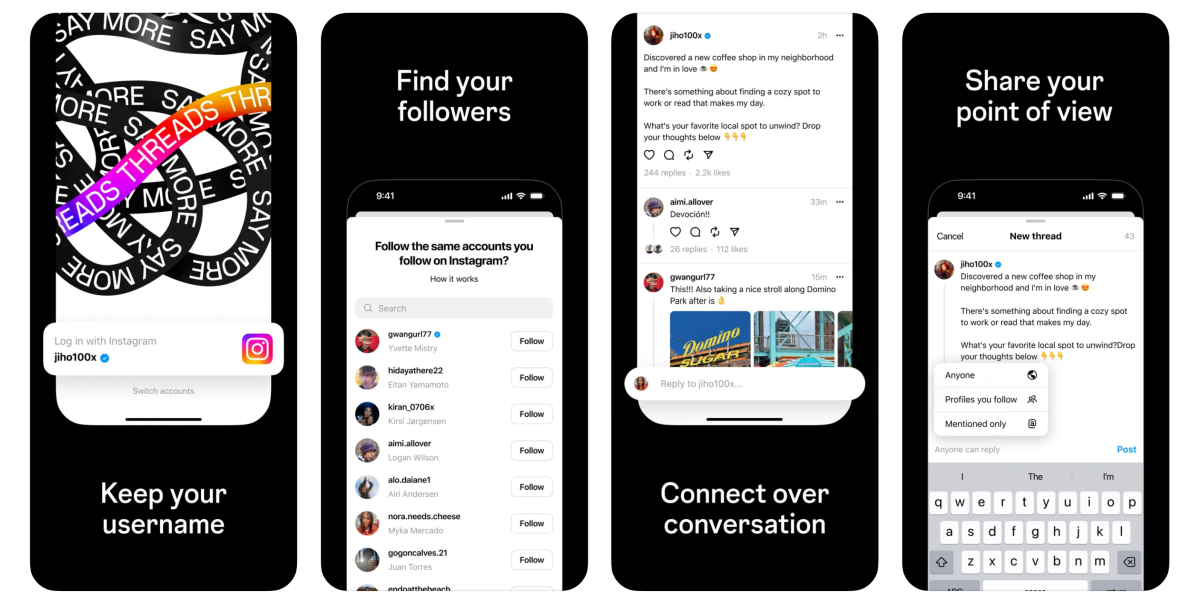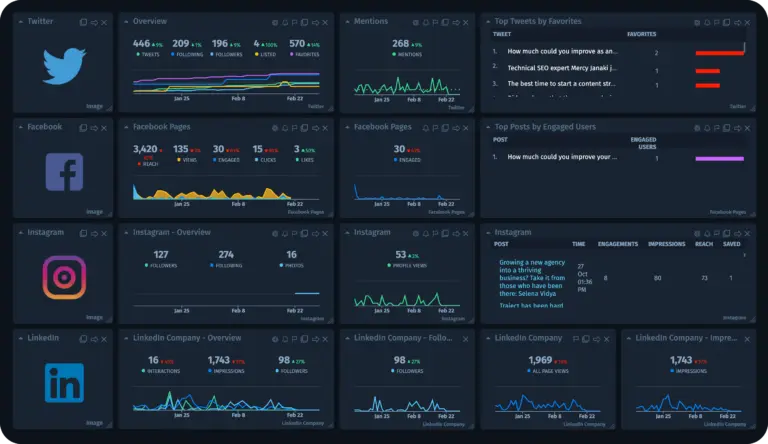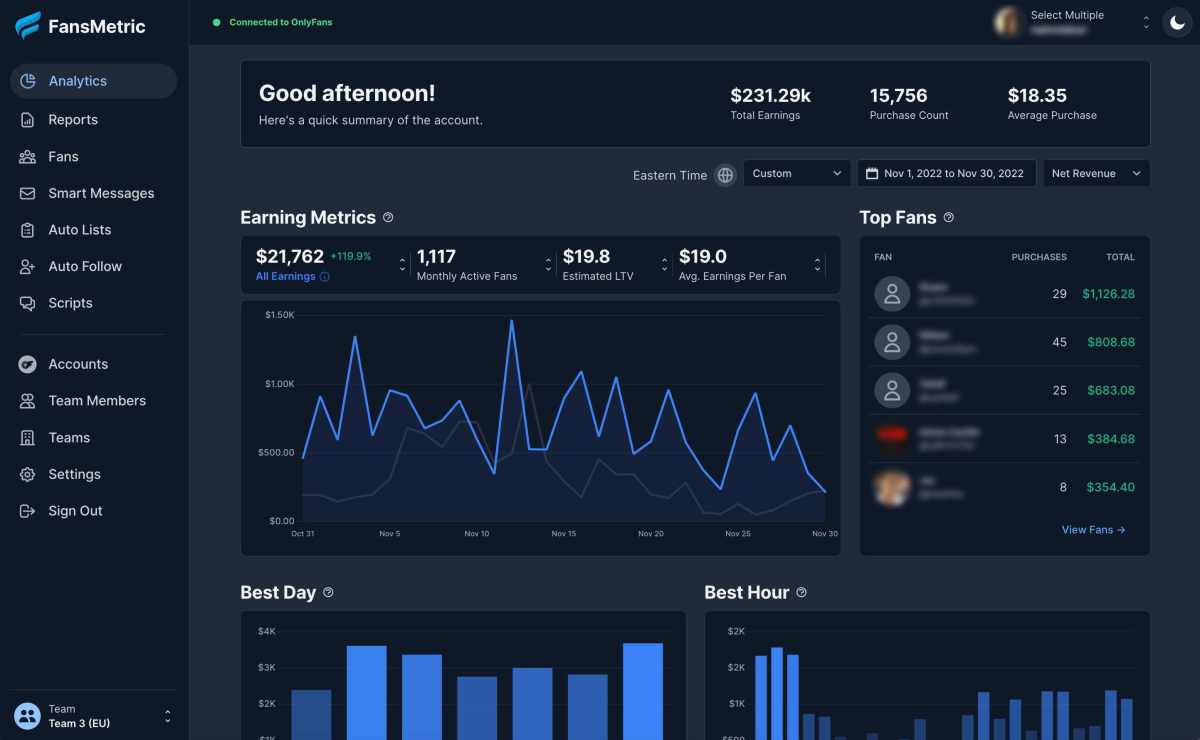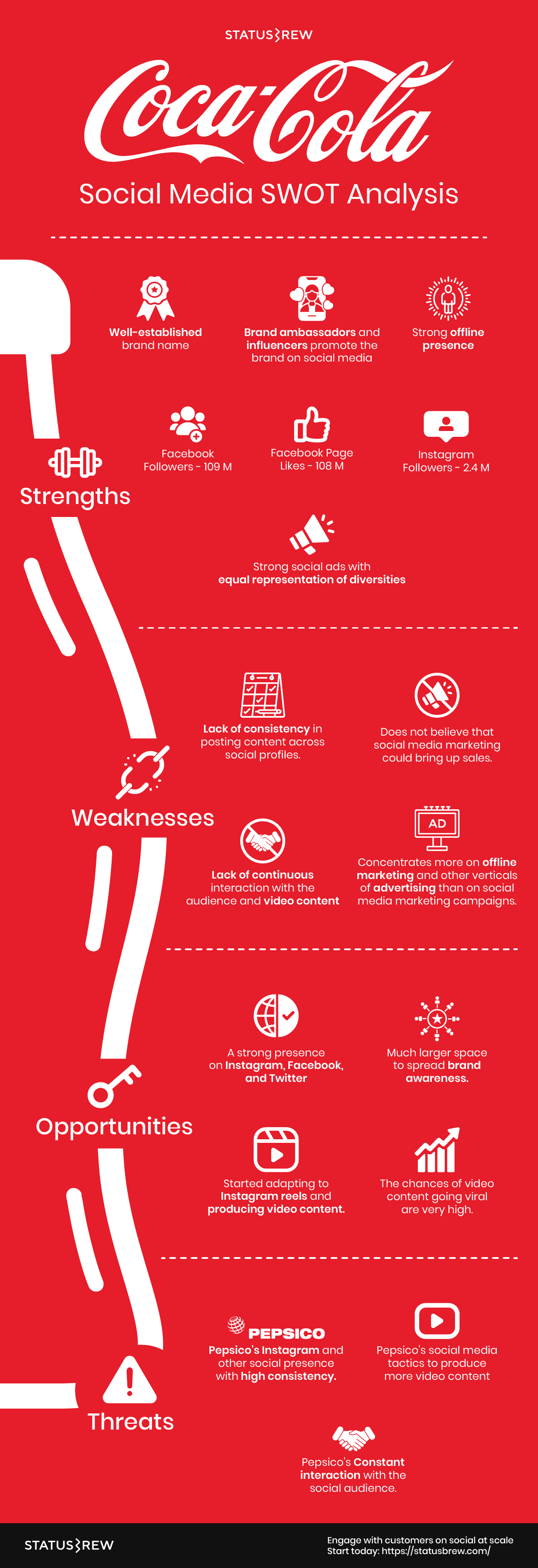Becoming a social media influencer can be a rewarding and exciting career path, allowing you to share your passions and interests with a large audience while also potentially earning money through sponsored content and collaborations. However, the path to success as an influencer can be challenging and requires a combination of strategic planning, hard work, and patience.
Step 1: Choose a niche
The first step in becoming a successful influencer is to choose a niche or area of focus. This could be a particular hobby or interest, such as beauty, fashion, or travel, or a specific demographic, such as parenting or fitness. By focusing on a specific niche, you will be able to build a dedicated following of people who are interested in the same topics as you. For example, if you are passionate about cooking, you could create a food blog and share recipes and cooking tips.
Here are a few examples of influencers from different niches:
Beauty: Huda Kattan, also known as Huda Beauty, is a makeup artist and beauty influencer with over 52 million followers on Instagram. She is known for her makeup tutorials and product reviews and has also launched her own successful line of beauty products.
Fitness: Kayla Itsines is a personal trainer and fitness influencer with over 12 million followers on Instagram. She is known for her Bikini Body Guides and her emphasis on healthy living and body positivity.
Travel: Chris Burkard is a professional photographer and travel influencer with over 4 million followers on Instagram. He is known for his stunning photographs of outdoor adventures and remote locations and has also published several books and produced a documentary.
Food: Tasty, is a YouTube channel and social media brand that creates and shares food videos, with over 80 million followers on YouTube and Facebook. They are known for their recipe videos that are simple, fast, and easy to make.
Fashion: Chiara Ferragni, also known as The Blonde Salad, is a fashion blogger and influencer with over 21 million followers on Instagram. She is known for her personal style and collaborations with major fashion brands.
These are just a few examples, there are many influencers in different niches such as parenting, technology, entertainment, etc.
Step 2: Build your brand
Once you have chosen your niche, the next step is to build your brand. This includes creating a consistent aesthetic for your content and developing a unique voice and personality. This will help you to stand out from the crowd and make it easier for your followers to recognize and remember you. For example, if you are passionate about fashion, you could develop a signature style that reflects your personal taste and create a cohesive look for your Instagram feed.
Step 3: Create engaging content
Creating engaging and high-quality content is essential for growing your following and building a loyal audience. This includes taking the time to create visually appealing and well-written posts that are relevant to your niche and align with your brand. For example, if you are a travel influencer, you could create a mix of content such as written blog posts, videos, and photographs of your adventures. SPE format to master short form content. Using the SPE format (Serial Position effect) is a great way to make sure your content is structured to keep people hooked. With attention spans sinking, it’s important to pay attention to the formats you use on social media. New trends, like short TikTok videos with gaming clips, show that users are looking for content that is easy to consume in short bursts.
You don’t have to create content on a daily basis, you can post 3-4 times each week, posting daily is good to grow faster but if you can’t provide it then reduce the times of posting, meanwhile focus on the quality of your videos. It is advisable to keep up with the trends, so whenever there is a new trend, post a video and use the trendy sounds as well.
When you’re first starting out on social media, don’t just focus on making posts. It’s important to keep your community engaged through features like Instagram Stories/Reels or comments. When you’re researching content ideas, keep an eye out for popular keywords in your industry. They’ll help you stay on top of the latest trends. Being consistent doesn’t mean you need to post every day. It means sticking to a content style that will keep people interested.
Social Media Strategy ≠ Content Strategy. Your social media strategy is all about getting people to your page, but your content strategy is what will keep them there and make them want to buy.
Step 4: Utilize social media platforms
Social media platforms, such as Instagram, TikTok, YouTube, and Twitter, are essential tools for building your following and growing your influence. It’s important to choose the platforms that are most relevant to your niche and where your target audience is most active. For example, if you are a beauty influencer, Instagram and YouTube might be the most effective platforms to share your content and engage with your followers. Understanding Broad Audiences. Before you start focusing on specific audiences, take the time to understand the overall appeal of each platform.

Influencers typically optimize their social media platforms through a combination of strategies, including:
1. High-quality images and videos: Influencers often use high-quality images and videos to showcase their products, services, or experiences. They use visual storytelling to capture their audience’s attention and make their content more engaging.
2. Consistent aesthetic: Many influencers develop a consistent aesthetic for their content, which helps to create a cohesive look and feel across their social media platforms. This can include using specific filters, color schemes, or layouts to create a recognizable brand identity. Visuality Speaks on Pinterest. Pinterest is all about aesthetics, so make sure you’re curating boards that represent your niche and focus on visual content.
3. Hashtags: Influencers use hashtags to make their content more discoverable and increase their reach. They use popular and relevant hashtags that are related to their niche to connect with their target audience. Remember Keywords lead to Hashtags. It’s not just about using hashtags, it’s also about understanding what people are searching for so you can use the right ones.
4. SEO (Search Engine Optimization): Influencers use SEO techniques to make their content more discoverable on search engines. They use keywords in their bio, captions, and post titles, which helps their content to appear in search results.
5. Engaging captions and call-to-action: Influencers use captions and call-to-action to engage with their audience and encourage them to take specific action. They use questions, prompts, and comments to start conversations and encourage their followers to participate. Incorporating user-generated content (UGC) into your social media feeds can help make your brand feel more relatable and personal to your followers. Using clickbait headlines can be a good way to grab attention, but make sure you’re also telling a story that leads up to your call-to-action.
6. Don’t pin Viral Posts. Viral posts might seem like a good idea, but remember that they’re not always tailored to your specific audience. Make Them Question or Answer First. Make sure you’re engaging with your followers by asking questions and encouraging them to answer
7. More than 1 link decreases conversions. Keep it simple by including just one link. Too many options can be overwhelming for people.
8. Algorithm Moderates, you repurpose. Platforms like TikTok and Instagram use algorithms to moderate content, sometimes resulting in engagement rate fluctuations. To overcome this, it can be helpful to repurpose popular content from the past to keep your engagement rates steady. Algorithm Moderates, you repurpose. Platforms like TikTok and Instagram use algorithms to moderate content, sometimes resulting in engagement rate fluctuations. To overcome this, it can be helpful to repurpose popular content from the past to keep your engagement rates steady.
9. Paid Advertising: Influencers also use paid advertising on social media platforms, such as Instagram and Facebook, to reach a larger audience. They use sponsored posts, stories, and influencer marketing campaigns to promote their content and increase their visibility.
10. Collaboration: Influencers also collaborate with other influencers, brands, and companies to reach new audiences and increase their visibility. They can collaborate on social media campaigns, sponsored posts, and product reviews.
11. Social Media is more about networking. Social media is becoming increasingly pay-to-view, with platforms like YouTube and TikTok relying on recommendations to drive traffic. It’s important to remember that social media is about connecting with your audience, not just reaching them through ads. Building an engagement strategy, networking, and showing your audience why they should care about your brand are all key to success.
12. Perform a Year-End Social Media Business Audit. As the year comes to a close, it’s important for businesses to take stock of their social media efforts and assess what has been working well and what areas need improvement. A year-end social media business audit can help you identify areas for growth and set goals for the coming year. A social media audit is a process used to measure the success of your social strategy across accounts and networks. An audit identifies your strengths, weaknesses, and the next steps needed to improve.
By using a combination of these strategies, influencers can optimize their social media platforms and increase their reach and engagement with their audience.
Step 5: Network and collaborate
Networking and collaborating with other influencers and brands in your niche can help to grow your following and open up new opportunities for monetization. For example, if you are a fashion influencer, you could reach out to clothing brands and offer to feature their products in your content.
Step 6: Be patient and persistent
Building a successful following as an influencer takes time and patience. Be consistent in your posting and engagement with your audience, and don’t get discouraged if you don’t see immediate results. Remember that building a following takes time and effort, but with patience, persistence, and a solid strategy, you can become a successful influencer.
There are companies that help manage and boost a social media influencer’s presence and reach. These companies are commonly known as talent agencies, influencer marketing agencies, or influencer management companies. They offer a wide range of services, including:
1. Audience analysis and targeting: These companies can analyze an influencer’s audience and help them identify their target audience and the best platforms to reach them.
2. Content creation and strategy: They can help influencers create and plan their content and develop a content calendar to ensure consistency and engagement.
3. Campaign management: They can help influencers secure brand partnerships, sponsorships, and collaborations, and manage the logistics of these campaigns.
4. Analytics and reporting: They can track and analyze an influencer’s performance, such as engagement rates and click-through rates, and provide regular reports on their progress.
5. Legal and financial services: They can help influencers with legal and financial matters related to their work, such as contract negotiations and tax compliance.
6. Talent management: They can help influencers with personal branding, public relations, and career management.
7. Paid Advertising: Some agencies also offer paid advertising services, such as social media advertising campaigns, which help influencers reach a larger audience and increase their visibility.
Here are a few examples of companies that manage social media influencers:
1. The Influencer Agency: a full-service agency that specializes in influencer marketing, content creation, and talent management. They work with a wide range of clients, including brands, celebrities, and influencers across various niches.
2. Tribe: A platform that connects brands with social media influencers, it allows influencers to create campaigns, track their performance, and get paid.
3. Hootsuite Influencer: A platform that helps brands identify, engage and measure the impact of influencers on their social media campaigns. Hootsuite has a great article on how much influencers make on each social media network here and below:

4. Klear: A platform that provides influencer research and analytics, it allows brands and agencies to identify, engage and measure the impact of influencers on their social media campaigns.
5. Influencer.co: A platform that connects brands with influencers, it provides a range of services such as campaign management, influencer research, and analytics.
Here are a few tips on how to reach out to influencer management companies and capture their attention:
1. Research the company: Before reaching out, take the time to research the company and familiarize yourself with its services, clients, and the types of influencers they work with.
2. Tailor your pitch: When reaching out, tailor your pitch to the specific company and show that you have done your research. Explain why you would be a good fit for their agency and how your skills and experience align with their services and clients.
3. Showcase your portfolio: Include a link to your social media profiles and a portfolio of your work. Make sure your content is high-quality and relevant to the niche you want to work in.
4. Have a solid online presence: Having a strong online presence, such as a website or a blog, will give you an advantage when reaching out to companies.
5. Network: Networking is a great way to meet people in the industry and get your name out there. Attend events, and conferences and participate in online groups that are related to your niche, this will give you the opportunity to meet people who might be interested in working with you.
6. Be professional: When reaching out to companies, make sure to be professional and polite in your communication. Follow up with them if they don’t respond, but be respectful of their time and don’t be overly persistent.
Remember that building a relationship with these companies takes time and effort, but with patience, persistence, and a solid strategy, you can turn your passion into a successful career.
Bonus tip: Here are a few examples of conferences that an aspiring influencer can attend to gain exposure and network with industry professionals:
1. Influencer Marketing Show: This conference, held in London and New York, brings together influencer marketing experts, brands, and agencies to discuss the latest trends and strategies in the industry.
2. BlogHer: This annual conference is one of the largest events for women bloggers, influencers, and content creators, it provides a platform for attendees to learn about the latest strategies, connect with other bloggers and brands, and gain exposure for their work.
3. VidCon: This annual conference is focused on the online video industry, it brings together creators, brands, and industry professionals to discuss the latest trends and strategies in the world of online video.
4. SXSW: South by Southwest (SXSW) is a set of film, interactive, and music festivals and conferences that take place every spring in Austin, Texas, USA. It’s a great platform for creators, influencers, and industry professionals to connect, learn and showcase their work.
5. Social Media Marketing World: This annual conference is focused on social media marketing, it brings together industry experts, brands, and influencers to discuss the latest trends and strategies in the world of social media.
6. Digiday Content Marketing Summit: This conference brings together publishers, brands, and agencies to discuss the latest trends and strategies in content marketing, it’s a great platform to learn about the industry and network with other professionals.
In summary, by following these tips and advice, you can increase your chances of capturing the attention and grow your specific Social Media account and ultimately become a Social Media influencer superstar!











